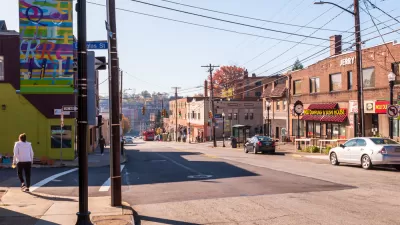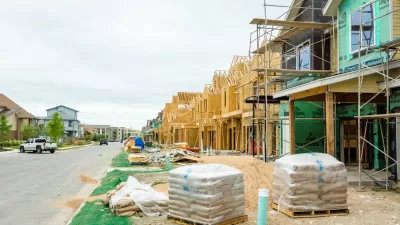As the dust settles from the Great Recession—evidence is growing to support the growing relevance of urban areas in the overall economic picture of the United States.
Josh Lehner shares news of work by the Oregon Office of Economic Analysis to update data on employment growth by metro size for the United States. Lehner summarizes the data:
In the big picture, not much has changed in the past year or two. America’s largest metros (the 51 with a population of 1 million or more) have not only seen the strongest gains in recovery, they are growing at faster rates than their smaller metro and nonmetro counterparts. In other words, the gap is widening, even as the rural recovery is real, albeit slow.
The article includes three infographics that provide detail and illustration of these points.
In a separate article, Joe Cortright follows up on that post to provide additional evidence of the growing significance of cities to the economic health of the country as a whole. In addition to making use of the infographic created by the Oregon Office of Economic Analysis to show job growth in large metro areas, Cortright makes use of three other metrics to make his case: Fitch Ratings, the rent gradient (with data from the decennial census and the American Community Survey), and the walkability premium (with data from Zillow Talk).
FULL STORY: Metro Size and Employment, 2015

Maui's Vacation Rental Debate Turns Ugly
Verbal attacks, misinformation campaigns and fistfights plague a high-stakes debate to convert thousands of vacation rentals into long-term housing.

Planetizen Federal Action Tracker
A weekly monitor of how Trump’s orders and actions are impacting planners and planning in America.

In Urban Planning, AI Prompting Could be the New Design Thinking
Creativity has long been key to great urban design. What if we see AI as our new creative partner?

King County Supportive Housing Program Offers Hope for Unhoused Residents
The county is taking a ‘Housing First’ approach that prioritizes getting people into housing, then offering wraparound supportive services.

Researchers Use AI to Get Clearer Picture of US Housing
Analysts are using artificial intelligence to supercharge their research by allowing them to comb through data faster. Though these AI tools can be error prone, they save time and housing researchers are optimistic about the future.

Making Shared Micromobility More Inclusive
Cities and shared mobility system operators can do more to include people with disabilities in planning and operations, per a new report.
Urban Design for Planners 1: Software Tools
This six-course series explores essential urban design concepts using open source software and equips planners with the tools they need to participate fully in the urban design process.
Planning for Universal Design
Learn the tools for implementing Universal Design in planning regulations.
planning NEXT
Appalachian Highlands Housing Partners
Mpact (founded as Rail~Volution)
City of Camden Redevelopment Agency
City of Astoria
City of Portland
City of Laramie




























